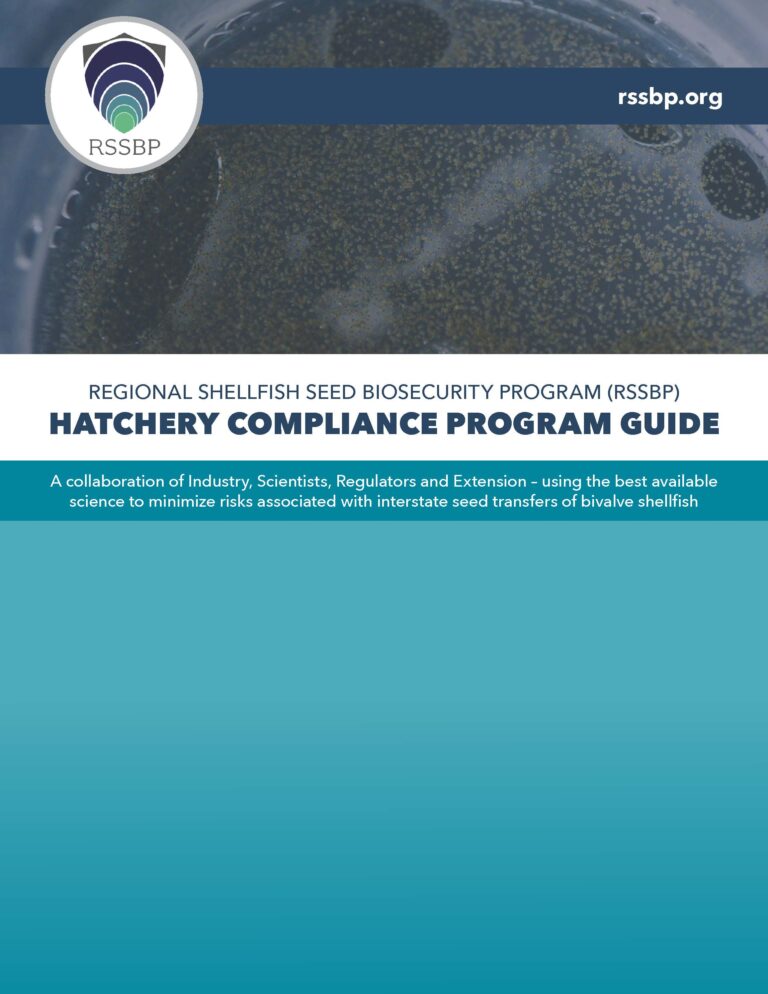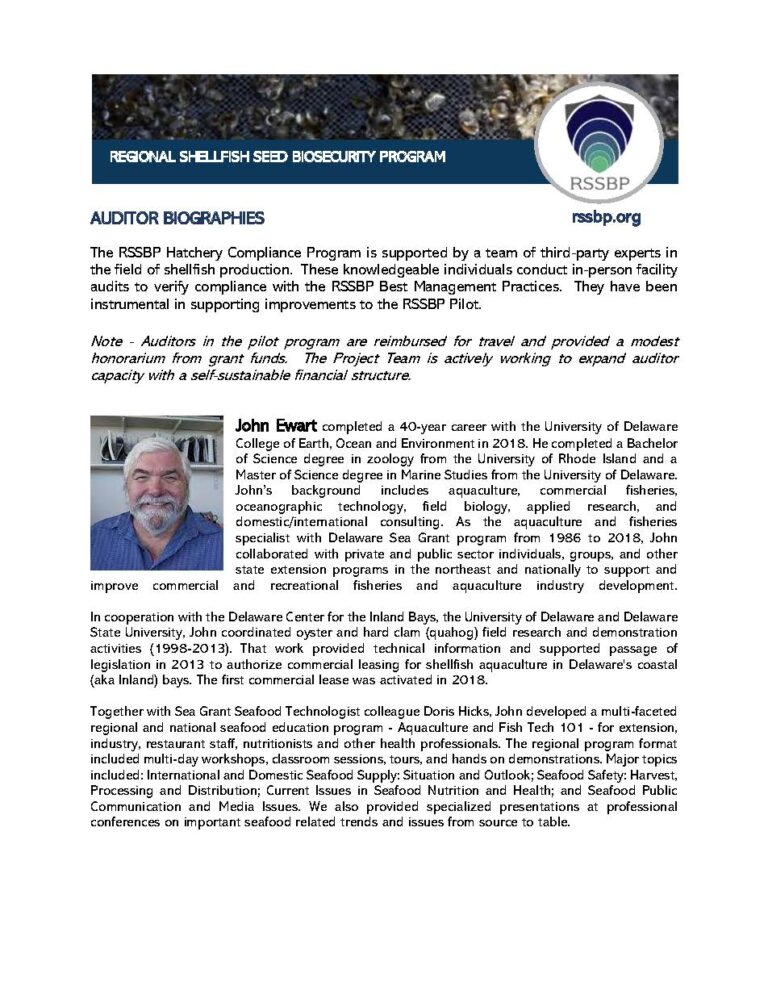Goal
Incentivize best management practices for biosecurity during the production and transfer of shellfish seed to streamline the facilitation of regulation and commerce.
Premise
The most biosecure shellfish products are those that have not been exposed to raw water, namely larvae and newly set seed. Even small seed that have low filtration rates and less exposure to untreated seawater are more biosecure than larger, older seed. Employing best management practices helps ensure biosecurity in shellfish hatcheries and nurseries. Supporting data are provided by years of shellfish seed transfer health evaluations by the Haskin Shellfish Research Laboratory and the Virginia Institute of Marine Science.
Hatchery and State Participation is Voluntary
Hatcheries are encouraged to participate by applying to be a BMP-compliant hatchery facility. This includes following best management practices (BMPs) to improve the biosecurity of their facility and then documenting the biosecurity of their products via routine standardized health evaluations. A letter of compliance is provided to compliant hatcheries which they can share share with regulators in states where they want to send seed.
Regulators are encouraged to consider hatchery compliance participation and status in their evaluation of requests for shellfish seed importations.
Note – shellfish importation permits are still required regardless of RSSBP participation – shellfish disease is just one of the considerations for seed transfers.
Hatchery Participation Option Overview
Step 1. Enrolled Facility Apply and pass facility documentation review
Step 2. BMP-Compliant Facility Pass an annual, in-person facility audit
Step 3. Biosecure Product(s) Apply and pass an audit of health evaluation records
Specific shellfish products by a BMP-Compliant Facility may be certified under this Program. This ensures products meet biosecurity standards and demonstrates the minimal disease risk of the facility. Note, eligible products are specific to species and size and must be held on water treated to eliminate pathogens (e.g., 1µm filtered water or well water).
At this time, nursery products reared in untreated, ambient waters are not being considered under this program.
Application Forms
RSSBP Hatchery Application (for first time applicants)
Renewal Request (for BMP-Compliant Facilities currently in the Program – must be submitted every year).
Forms must be downloaded and emailed to info@rssbp.org (there is no online submission option).
Questions?
Contact info@rssbp.org







